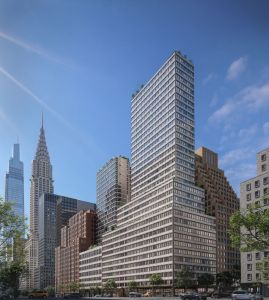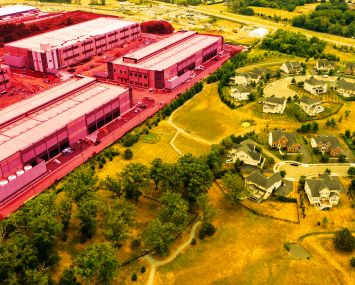These Myths Dog Efforts to Fully Electrify Buildings — Let’s Bust Them
By Jeremy Shannon April 23, 2025 11:00 am
reprints
While hesitation and skepticism may exist among building owners and developers over building electrification, removing on-site fossil fuel sources offers an increasingly tangible and cost-effective approach for lowering operational carbon emissions in the built environment.
Believe it or not, concerns that may have been valid as little as five years ago have now been outpaced by advancements in all-electric building technology, creating a gap between the perception and the reality of building electrification strategies. To help clear the air, I have collected some of the most commonly articulated building electrification myths my team and I have encountered in our work.
The goal is to offer an updated, and more accurate, view for each while also offering building owners and design teams a starting point for understanding how all-electric building designs have overcome these perceived technological and functional barriers.
Myth No. 1: Heat pump technology doesn’t work in cold climates.
Reality: Heat pumps have proved effective in cold climates, where temperatures regularly drop below freezing. In fact, the commercial market now offers numerous options that have demonstrated good performance for various project types. Modern heat pumps can achieve a coefficient of performance (COP) over 1.0 even at minus-20 degrees Fahrenheit, and many models reach COPs of 2.5 or greater at heating design temperatures of 13 in New York City. This is significantly better than gas boilers, which will always have a COP of 1. Heat pumps are successfully used across North America, including in Alaska, providing annual energy savings compared to fossil fuel systems.
Myth No. 2: Heat pump technology isn’t available for ‘X’ building type.
Reality: This was a valid concern five years ago, but not anymore. Heat pumps are now scalable for all building types and can connect to various distribution systems, including air-to-air, air-to-water, and other systems. They can be linked in series for efficiency and redundancy, ensuring continuous operation even if one unit fails. Modern heat pumps also integrate well with building management systems (BMS), eliminating the need for specialized technicians or proprietary controls.

Myth No. 3: Heat pump technology is too expensive.
Reality: Heat pumps can replace both heating and cooling systems, often reducing initial costs. Case studies, like those from the New York City School Construction Authority, show cost reductions in new high school buildings. The market is becoming more competitive, driving down costs. As demand grows, especially in mixed and colder climates, heat pumps are becoming cost competitive and can save money upfront.
Myth No. 4: Electric service for heat pumps is very large, expensive, and utilities might not grant the full electric service size.
Reality: While electric service needs and costs will increase, removing gas service and reducing construction time can offset these expenses. For new buildings requiring air conditioning, the increase in electrical service is manageable and eliminates gas infrastructure costs. Retrofitting existing buildings can be challenging but is solvable with creative solutions. In most U.S. locations, the grid will be able to handle the increased load from rapid electrification of heating for at least another decade, giving utilities time to build up their capacity.

as an all-electric development. Photo: Scott Norsworthy, courtesy Gensler.
Myth No. 5: Commercial/residential kitchen cooking doesn’t work as well with electricity and is more expensive.
Reality: Induction technology offers high-quality electric cooking options, heating food rapidly and precisely. It improves indoor air quality, reduces fire risks and lowers ventilation needs, enhancing comfort and reducing costs. While electricity rates are currently higher, the overall operating costs can be lower due to reduced ventilation requirements. Many studies are available that show the benefits of electric cooking, making it a viable alternative to gas.
Myth No. 6: The utility grid in many areas still relies heavily on fossil fuels and is not decarbonizing as quickly as projected.
Reality: Electrification supports grid decarbonization efforts. Even with current grid conditions across the U.S., heat pumps are more efficient and environmentally friendly than fossil fuels in all markets. By focusing on building electrification, we can contribute to a cleaner grid and a sustainable future. There’s no need to wait for additional grid improvements to start making a positive impact today.

Myth No. 7: My neighborhood has brownouts, and or the grid doesn’t have capacity for rapid building electrification at scale.
Reality: Electrifying buildings primarily affects heating and hot water, which peak in winter. Brownouts usually occur during summer peak usage. In New York, it will take 15 years before winter peaks exceed current summer peaks. This gives utilities time to upgrade infrastructure. Using cleaner baseline plants year-round can lower costs and improve efficiency. As more buildings switch to electric, investment in a resilient grid will increase, supporting the demand.
In closing, transitioning to all-electric buildings is both imminently feasible and essential for a sustainable future. Despite lingering myths and misconceptions, advancements in heat pump technology, cost efficiencies and the evolving electric grid make building electrification a practical and beneficial choice for many building owners. Accelerating the adoption of all-electric buildings will reduce our reliance on fossil fuels, save money and contribute to a cleaner, more resilient energy system.
Jeremy Shannon is a sustainability director in Gensler’s New York office.


